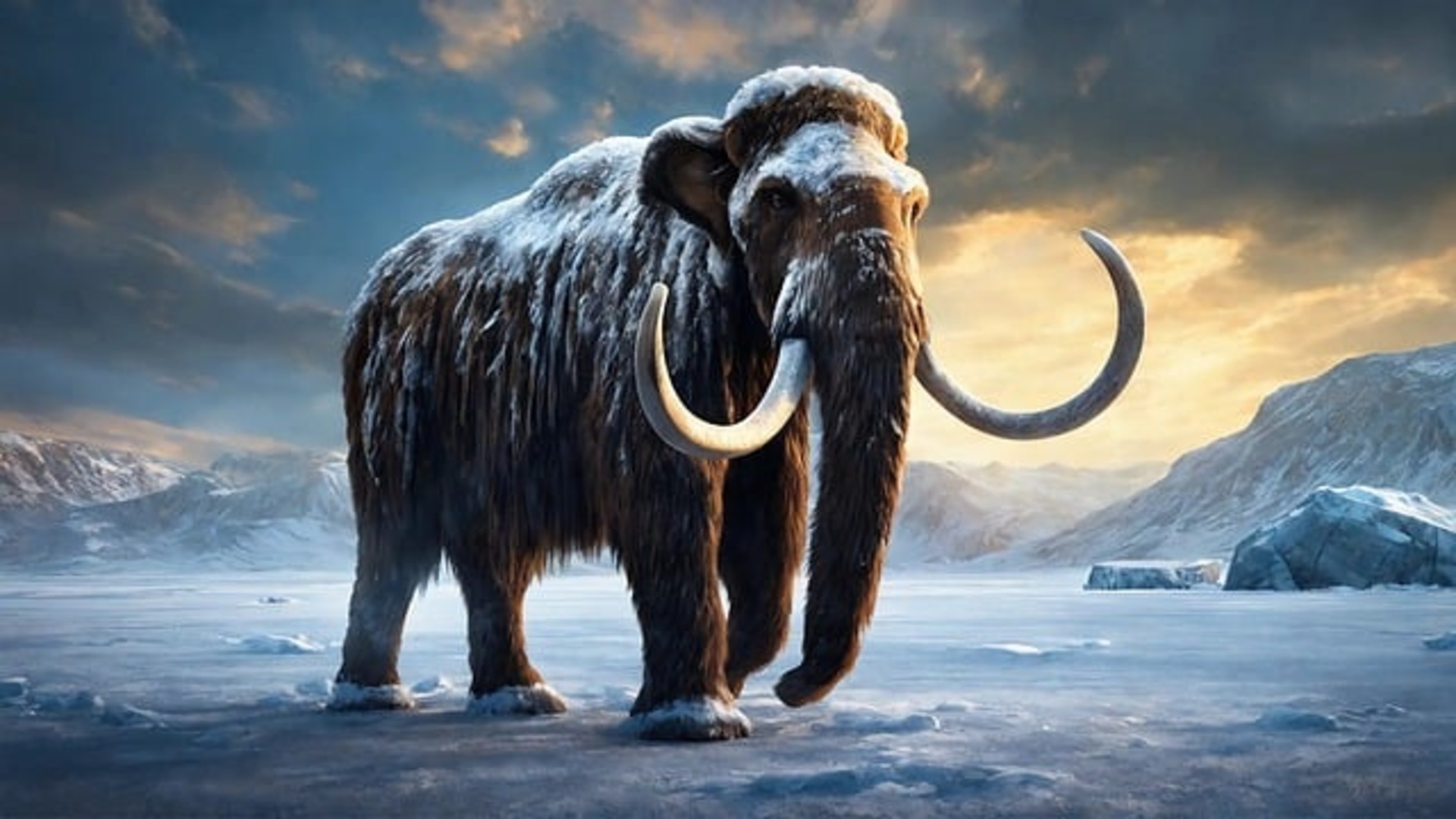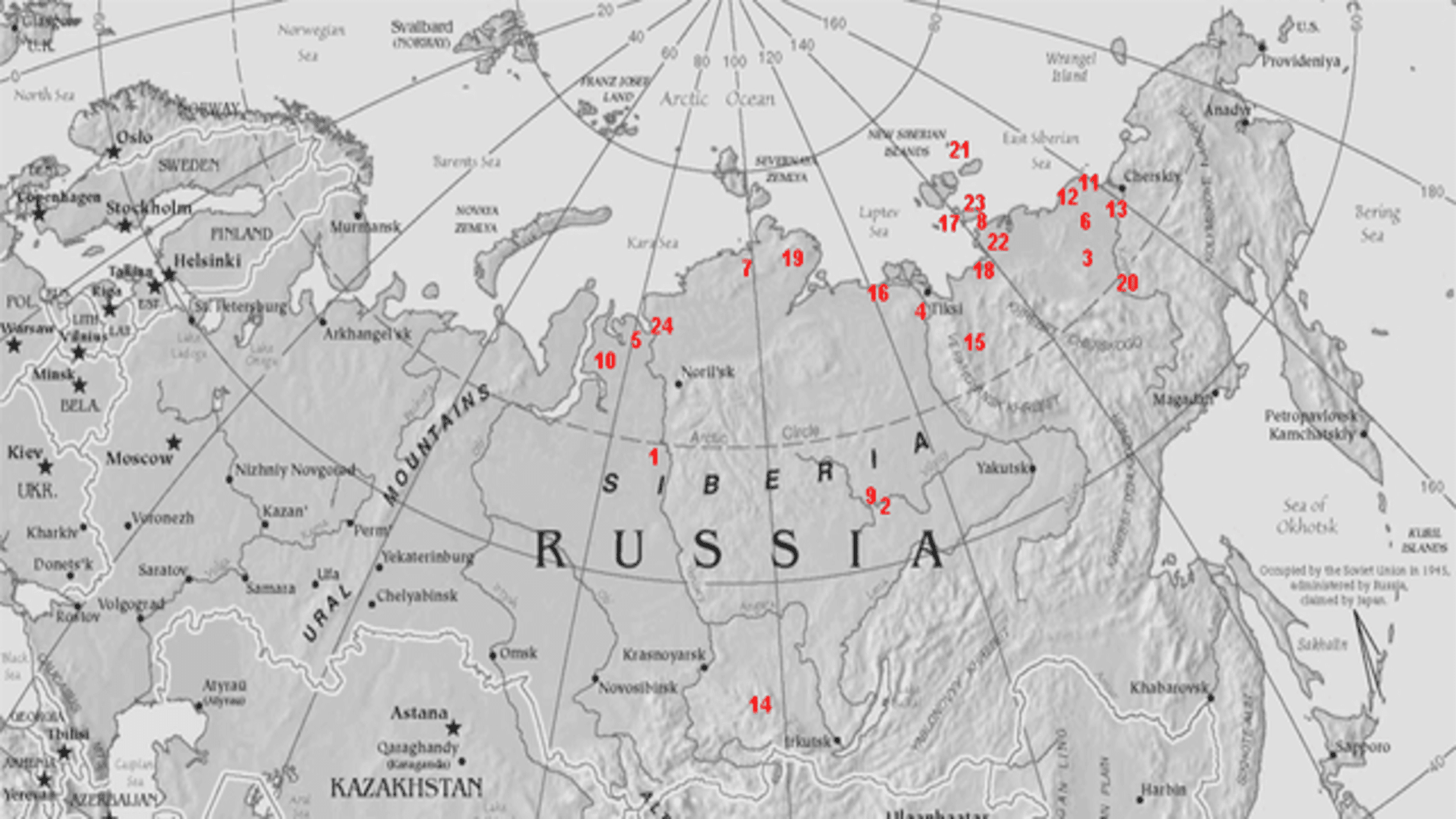Jurassic Park describes a world where dinosaurs are brought back from extinction. In the movie, this kicks off dangerous encounters between some unlucky humans and the largest lizards the world has ever seen.
Of course, Jurassic Park is science fiction. But what if we could bring back animals that have gone extinct? Or speed up the evolution of animals to help their species cope with rapid climate change?
One company thinks that we not only can but we should. And they’ve decided to forge this path.
Colossal Biosciences is a biotech company founded by geneticists at Harvard and MIT. Their mission statement is to “remedy the planet, the future, and the world” through de-extinction. They believe that biodiversity is key to balancing and protecting ecosystems.
The company is currently pursuing the de-extinction of the woolly mammoth to reintroduce the species to ecosystems that still need them. And they say they’re on track to do this by 2028.

An AI-generated woolly mammoth
Image Source: Pixabay
The Logic
The justification for the de-extinction of the woolly mammoth is to help prevent disastrous results of climate change. The company cites that woolly mammoths helped balance the global ecosystem from the Arctic, where herds used to pack down snow, trample mossy plants, and distribute grass seeds throughout the frigid tundra.
The benefits of these services are clear today, according to the company.
Packed-down snow is harder to melt, and grasslands don’t trap heat as much as the mossy crops that have sprouted up in Antarctica. Instead, they help to reflect sunlight. This prevents permafrost from melting, which leads to rising sea levels and releases greenhouse gases.
Colossal Biosciences also claims that bringing back woolly mammoths will preserve living elephant species that are going extinct. They reason that moving cold-resistant elephant hybrids to places where they’ll be able to thrive is better than watching their numbers dwindle across Africa and Asia.
The Science
Using DNA of well-preserved wooly mammoth tissue found in Alaska and Siberia, along with DNA from elephants, scientists can pinpoint the gene sequences that provide cold resistance. From there, they will genetically modify elephant embryos using CRISPR. Then, they’ll implant the hybrid embryo in surrogate elephant mothers.
Places where Mammoth and Woolly Rhinos have been found

Regions of Siberia where well-preserved woolly mammoth remains have been found
Image Source: Wikimedia Commons
Colossal plans to experiment with both Asian elephants (the closest living relatives of the woolly mammoth) and African Savanna Elephants, which are larger and so might have an easier time giving birth to the hybrid calf.
Beyond having long, shaggy fur, the new species should have a few other mammoth-like traits to help them adapt to the Arctic. These include:
- Large tusks for digging plant matter out of the snow
- Larger molars to chew tough arctic plants
- More active lifestyles help the mammoths keep warm and stamp down snow
- Fat reserves along the upper ridges of their back (almost like the humps on a camel), which store energy and help insulate them from the cold
- Smaller, more compact ears that radiate less heat away from the elephant
The newborn hybrid elephant/mammoth calves will be born and socialized at a conservation facility. This will help them learn to be mammoths before they’re released in the northern tundra. It will also allow scientists to take notes on the new species.
The Risks
While Colossal Biosciences seems sincere in its efforts to protect the planet, many still have doubts.
After all, the ecological systems on our planet can be very fragile. Introducing new species into a region where they don’t currently exist can have costly effects on the natural balance. Just because mammoths naturally roamed the Arctic 4,000 years ago doesn’t mean that the ecosystem is ready for them today.
Some experts believe that Colossal Biosciences is setting their new species up for quick extinction as the globe continues to warm. Others believe that the new species will become exotic creatures for zoos or poachers.
Finally, scientists and citizens alike see this as a slippery slope. Either de-extinction will lead to a real-world Jurassic Park, or to a world in which a company can “play god.” It wouldn’t be the first time human enterprises have altered evolution – just look at animal agriculture!
However, it will offer an avenue for extreme species alteration in a very short timescale.
And this, to many, is a very risky prospect.
If you enjoyed reading this article, show us your support by purchasing merchandise at our Shop.
Alternatively, you could sign up for our newsletter. That’s free.


